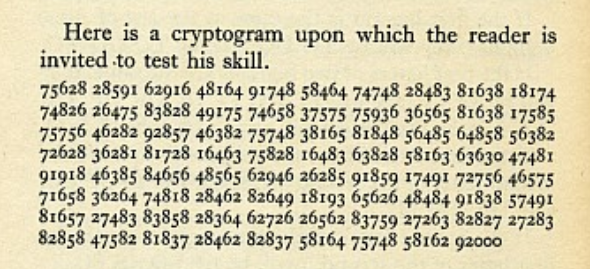25 different combinations exist, but only 18 are used. 81 (20 occurences) is the most frequent one, followed by 75, 82 and 85 (17 occurences each).
Does every pair stand for a letter of the alphabet? So, far nobody could prove this hypothesis.
More information
Alexander D’Agapeyeff himself is said to have forgotten how he had encrypted this message. It is well possible that a mistake happened during the encryption procedure or the printing process. In later editions of the book the challenge was not included.
More information about the D’Agapeyeff challenge is available on Wikipedia. Nick Pelling has covered this challenge severals times on his Ciphermysteries blog. A pretty good analysis of this cryptogram is available in a charged Cryptologa article from 1977.
The D’Agapeyeff challenge is also covered in my book Codeknacker gegen Codemacher. However, I didn’t take it on my top 50 unsoved cryptograms list – in my view there are 50 more interesting crypto mysteries.
Today, Codes and Ciphers is available as an eBook for a few Dollars. There are also several print editions. However, according to Tobias Schrödel, original prints of the first edition (the one with the unsolved challenge) are pretty rare.
Follow @KlausSchmeh
Further reading: Who can make sense of this strange document?
Linkedin: https://www.linkedin.com/groups/13501820
Facebook: https://www.facebook.com/groups/763282653806483/



Kommentare (8)